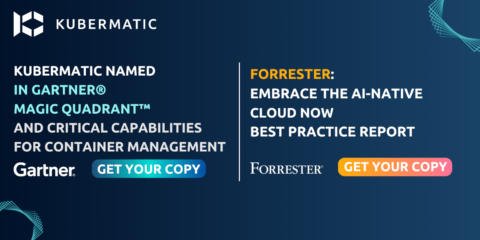Get our comprehensive KKP vs OpenShift comparison
When selecting a Kubernetes management platform, enterprises must consider factors such as scalability, hybrid-cloud capabilities, self-service features, multi-cluster management, and integrations with cloud providers. Below, we compare Red Hat OpenShift and Kubermatic Kubernetes Platform (KKP) based on each platform’s key capabilities - so you can choose the best Kubernetes Management Platform that meets your enterprise requirements.
Why Choose KKP Over OpenShift?
KKP is a Kubernetes management platform designed specifically for enterprise customers. It addresses the operational challenges of managing Kubernetes at scale while providing a self-service developer and operations portal. With KKP, organizations benefit from:
- Lightweight Architecture: KKP is designed to be more lightweight, reducing resource overhead and optimizing performance for a smoother Kubernetes experience.
- Better Workflow and Usability: KKP offers an intuitive user experience, improving efficiency for both developers and operations teams.
- True Infrastructure Independence: Unlike OpenShift, KKP is fully infrastructure-agnostic, offering a broader range of cloud and on-premise deployment options.
- Advanced Multi-cloud & Edge Support: With fully supported edge Kubernetes deployments and extensive cloud provider integrations, KKP surpasses OpenShift in flexibility.
Key Feature Comparison
| Feature | OpenShift | KKP |
|---|---|---|
| CNCF Certified | ||
| Scale | Supports scaling | Built for large-scale deployments |
| Hybrid-cloud, multi-cloud, and edge environments | ||
| Self-service developer and operations portal | Limited | |
| Integration with leading cloud providers | AWS, Google Cloud, Azure, IBM Cloud, Alibaba Cloud, Oracle Cloud Infrastructure, VMware vSphere | AWS, Google Cloud, Azure, Openstack, VMware vSphere, Open Telekom Cloud, Digital Ocean, Hetzner, Alibaba Cloud, Equinix Metal, Nutanix |
| Dashboard to visualize Kubernetes deployment | ||
| K8sGPT & AIKit integration | ||
| Remote worker nodes | ||
| Automated Cluster Lifecycle Management | ||
| Multi-cluster Management | ||
| Multilanguage Support | ||
| MLOps Support | ||
| Automated Kubernetes Backup | ||
| Admin Panel to Manage all users | ||
| Kyverno | ||
| Creating and Saving Cluster Templates | Limited | |
| Backup and Recovery | ||
| Kubernetes Autoscaling | ||
| Air-gapped and Offline Deployments | ||
| Edge Kubernetes Support | Fully supported | |
| Source-to-image deployment | ||
| Multi-tenancy and Role-based Access Control (RBAC) | ||
| Custom Machine Deployments and Node Auto-provisioning | ||
| Open-source and Fully Transparent Development | Source code is open-source but binaries etc. require Subscription | Complete open-source; Additional features via enterprise edition |
| Lightweight and optimized architecture | ||
| Support / Consulting |
Conclusion
Choosing the right Kubernetes management platform depends on your enterprise’s needs. While OpenShift provides a robust solution, KKP offers greater flexibility, and a more lightweight experience, making it the preferred choice for enterprises seeking scalable, multi-cloud, and edge-ready Kubernetes deployments.



